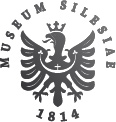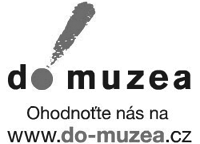ČASOPIS SZM SÉRIE B – VĚDY HISTORICKÉ
LXVIII/2/2019
Pavel ŽÍDEK: Vznik a organizace Obchodní a živnostenské komory v Opavě / Establishment and Organization of the Chamber of Commerce and Trade in Opava
(s. 109–128)
Abstract
In the course of less than a century of its existence, Chambers of Commerce and Trade represented significant institutions of the economic life of the Habsburg Monarchy and the Czechoslovak Republic. This was also the case of the Opava Chamber. Hence, the aim of the study presented is to try to approach major milestones in its development, from the proces of establishment in 1850 until its abolition at the end of 1948, especially in the area of the elected members of the Chamber, the right to vote and the changes in its chamber district.
Keywords: Chamber, Silesia, commerce, trade, members, organization
Veronika JURIKOVÁ: VODOLÉČEBNÉ LÁZNĚ V MNICHOVĚ U VRBNA POD PRADĚDEM (1881–1946) / HYDROTHERAPY SPA IN MNICHOV U VRBNA POD PRADĚDEM (1881–1946)
(s. 129–149)
Abstract
The study deals with a defunct hydrotherapy institute in Mnichov u Vrbna pod Pradědem, which was administered by the Congregation of Sisters of Mercy of Saint Charles Borromeo. The spa was in operation at least from 1881 to1946; during this period Mnichov became a treatment place, visited annually by hundreds of people.
Keywords: Mnichov, Vrbno pod Pradědem, Silesia, spa industry, spas, Congregation of the Sisters of Mercy of Saint Charles Borromeo, Borromean Sisters, Daughters of Charity of St. Vincent de Paul, hydrotherapy, spa treatments, Sebastian Kneipp
Marta ŠOPÁKOVÁ – Pavel ŠOPÁK: Karlova Studánka: proměny lázeňského území v letech 1945–1989 / Karlova Studánka: transformation of the spa area in the period from 1945 to 1989
(s. 151–163)
Abstract
The study focuses on the transformations of the Karlova Studánka spa in the period from 1945 to 1989. It reveals unknown facts from the history of the spa and the circumstances of its construction, lists the names of project authors, including unimplemented plans, and, on the basis of the plan material deposited at the spa's head office, it illustrates a comprehensive concept of the intentions relating to the construction of the premises, the modernization of the buildings and the modification of the park areas, including the contents of the buildings.
Keywords: Czech Silesia, Karlova Studánka, Moravia, Olomouc, Ostrava, spa industry, hydrogeology, urbanism
Ivana MALOUŠKOVÁ: Hřbitov v roli kroniky obce – příklad pohřebišť v Opavě-Kateřinkách / A Cemetery as a Village Chronicle – an Example of Burial Grounds in Opava-Kateřinky
(s. 165–182)
Abstract
The article deals with the history of burial grounds in the district of Opava-Kateřinky in the period from the second half of the 19th century and also pays attention to the last resting places of local personalities. The original cemetery in this municipality had been located around the church of St. Catherine of Alexandria since the Middle Ages, from where it was, after the cholera epidemic in 1866, gradually moved to the Chapel of the Holy Cross on the outskirts of this municipality. In 1896, a municipal cemetery, later called the town cemetery, was expanded and built. Kateřinky was mainly a peasant village, but the composition of origin and occupation of the deceased is quite manifold. At the church of St. Catherine, for example, tombstones of the possessors of the local courts, such as Czedik from Badenfeld, Renard or Rudzinski, have been preserved. In the church cemetery as well as the municipal one, there were then buried, for example, Matěj Valík, a chronicler and municipal secretary, František Eliáš, the Chief Regional Judicial Councillor, whose bond with the municipality was shielded by his wife Marie, Antonín Gruda a priest and politician, or Vincenc Janáček, the uncle of the composer Leoš Janáček, who chose Kateřinky as the place for spending the rest of his life. Information about the cemetery and the deceased is brought mainly by funds deposited in the Regional Archives in Opava and in the State District Archives in Opava. Additional information is also provided by the records and indices of funerals stored in the archive of Technical Services of the City of Opava - Cemetery Administration.
Keywords: Kateřinky, cemetery, tombstone, church, the Chapel of the Holy Cross, the Church, aristocracy, peasantry
MATERIÁLIE/MATERIALS
Libor MARTINEK: Korespondence Wilhelma Przeczka s Jindřichem Zogatou z let 1981–1991. Část III. Srpen 1989 – Únor 1991
(s. 183–190)
JUBILEA/ANNIVERSARY
(s. 191–200)
Druhý život Erasma Kreuzingera (připomínka k 140. výročí úmrtí) (Pavel Šopák), Jan Rohel a jeho Desatero (k 110. výročí narození) (Ondřej Kolář), Jiří Štefanides – životní jubileum (Sylva Pracná).
RECENZE/REVIEWS
(s. 201–205)
Ondřej KOLÁŘ – Kamila POLÁKOVÁ, Odchody a návraty. Vzpomínky účastníků zahraničního protinacistického odboje ze Slezska a Ostravska (Anna Blatecká), Bohumila TINZOVÁ – Barbara ZEITELHACK – Catherina LOPEZ DRÉAU, Konec a Začátek. Jeseník / Neuburg an der Donau / Sète. Tři evropská města v letech 1918–1920 (Ondřej Kolář).
KRONIKA/CHRONICLE
(s. 206–207)
Na cestě k vytvoření nového socialistického člověka. Konference k 70. výročí postátnění (nejen) zemských muzeí v Československu (Vojtěch Pokorný).
Poslední aktualizace článku: 19.06.2020
Vytisknout celý článek







